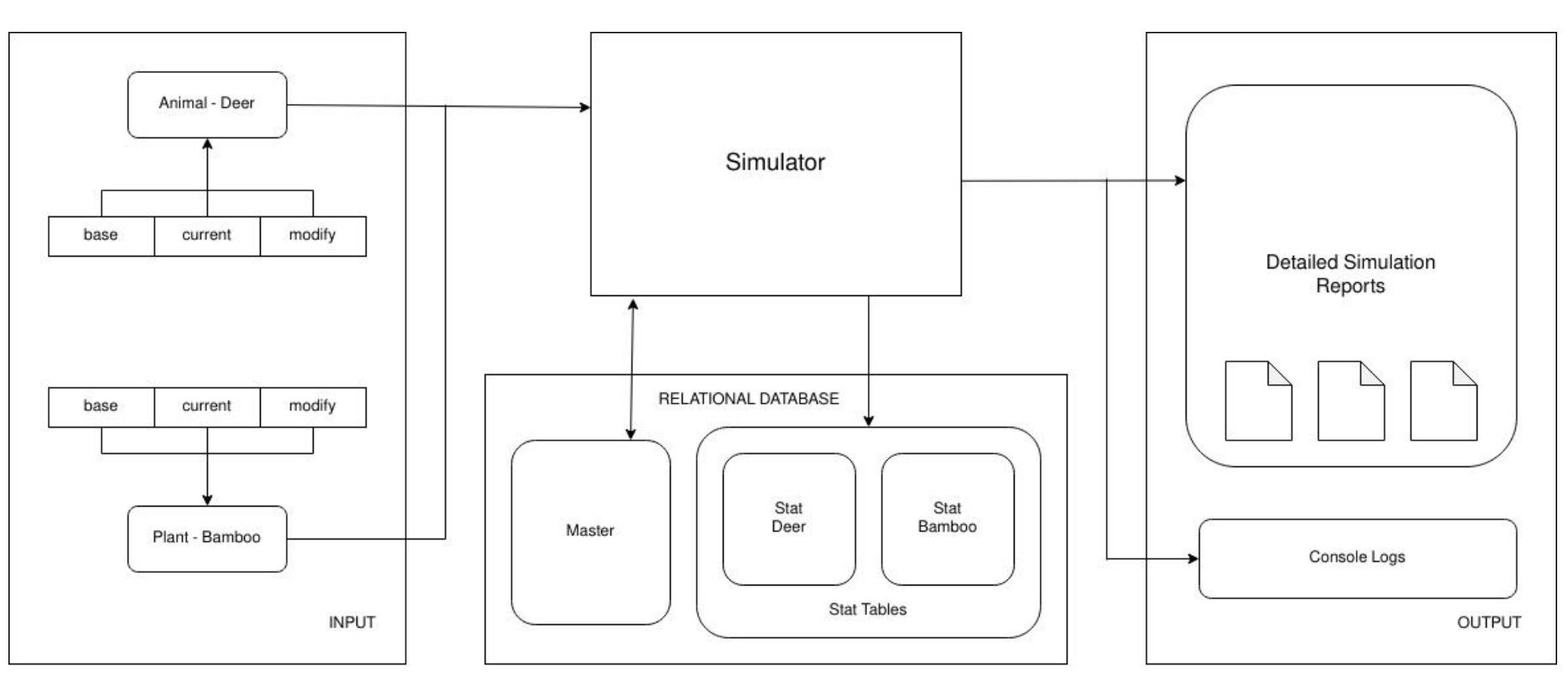
Initialization
Initialize the ecosystem with some amount of randomly generated organisms (each with a specific chromosome) for every species, keeping their traits under acceptable and feasible bounds.
Adaptation
Changes in non-hereditary traits as a stimuli to environmental factors. The rate or extent of change may be affected by the chromosome of the organism.
Evaluation
Calculate the fitness of each living organism by their ability to sustain and survive, and assign the evaluated fitness score to it.
Cross-over
Breeding of pairs of organisms selected at random (or guided random) to produce zero, one or multiple offsprings following the next generation. The chromosomes of the offsprings are directly derived from that of their parent's chromosomes.
Mutation
Slight modification at random to the genome of the offsprings born in the current generation, to maintain diversity in the genepool of the species and not let one chromosome dominate the population.
Selection
The organisms from past generations are removed to raise the average fitness of the species in the ecosystem. The fitness and non-hereditary traits may have a direct effect on the selection of an individual to survive another year.
Repeat
The process consisting of steps Adaptation to Selection repeats itself forever, unless the species becomes extinct after a Selection wipes off all organisms of the speceies.